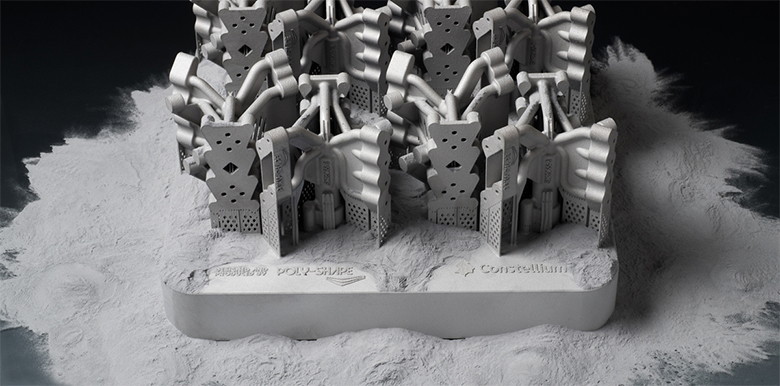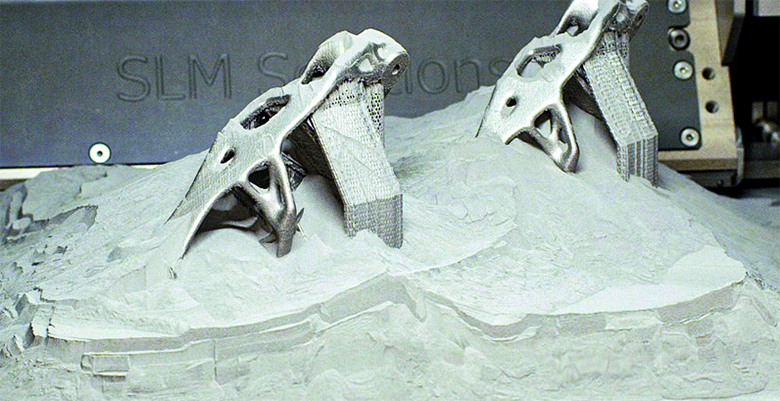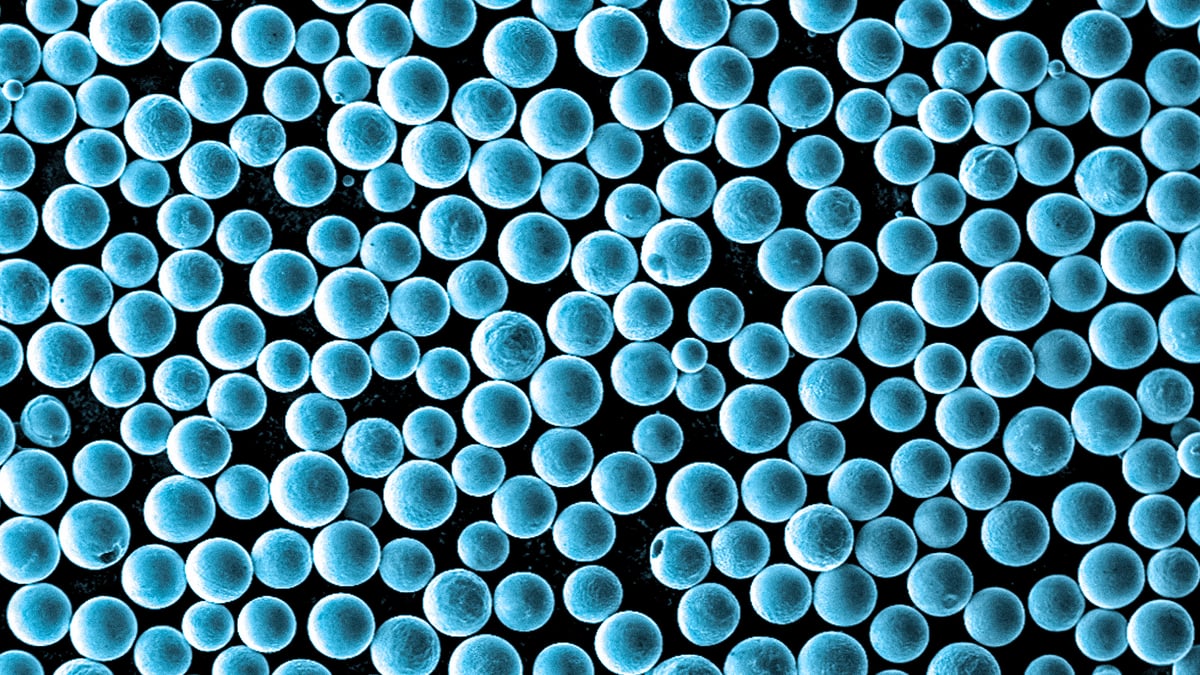My mother always used to tell me, “you get out what you put in.” This maternal advice rings true for many things, including metal 3D printing.
When metal 3D printers were first brought to market, the manufacturers sought to use commercially available powder as the feedstock to facilitate quicker and easier adoption. Without the need for specialized materials, customers could easily find metal feedstock to use for their applications, and printer manufacturers could focus on building more machines. It worked out well to accelerate the adoption of metal 3D printing.
However, as the industry matures and moves into production, it’s become clear that not all metal powders were created equal. The quality of the feedstock matters if you require reliable, consistent quality in your printed parts. There’s a growing need today for metal powder feedstock explicitly designed for high-quality, serial production additive manufacturing.

3D Specific Metal Material
Metal 3D printing provides many potential benefits to manufacturing, including design freedom to make lighter, more effective parts, simplified supply chain management with minimal inventories, reduced lead time in development and bespoke part production, to name a few. However, two challenges have prevented the technology from becoming a mainstream production technology and disrupting the current $13 trillion per year manufacturing industry.
These are: 1) Reliability and consistency of the metal additive manufacturing process, and 2) the slow speed of metal 3D printing.
These two issues result in metal printing costs roughly 10-time that of traditional manufacturing processes, such as casting. Unless this gap is narrowed, metal 3D printing will be relegated to R&D and a handful of production applications.

New Innovations on the Horizon
Fortunately, printer manufacturers have been working hard to address consistency issues by making their lasers more precise, their build environments more controlled, and their hardware more robust.
They’ve been tackling production speed issues by improving printer mechanics and packing the systems with more lasers. However, these improvements are incremental and don’t address the fundamental issues with the system. If you “get out what you put in,” you need to make sure what you put in is the right stuff. Otherwise, no matter how hard you try, you won’t get what you need out of the system. Better quality feedstock is a necessary component to achieve the gains needed to compete with traditional manufacturing.
Advancements need to be made in two areas: 1) Powder properties and 2) Special alloys.
It is well understood in the industry that powder uniformity, particle smoothness, and narrow PSD matter in metal 3D printing production as the material will absorb laser energy uniformly, melt uniformly, and solidify uniformly. However, what has not been understood is how much these properties matter. Recent data has shown that the answer to this question is – a lot! Powder that exhibits these characteristics will flow faster, pack denser, and adsorb less moisture. This translates into real-word benefits of more consistent mechanical properties (effectively better) and faster production (lower cost).
The good news for the metal AM industry is that many traditional gas atomized powder vendors have sought to improve their technology to improve the powder feedstock or have adopted newer technology such as plasma and centripetal atomization.
What is truly exciting today is that some new start-ups (including my own, Equispheres) have arrived with proprietary atomization techniques to produce powder specifically for 3D printing. In fact, many companies are working hard to bring newer compositions to the market. The list of ‘printable’ metal materials has doubled in the last three years, dramatically expanding the number of possible applications where users can leverage additive manufacturing.
Aluminum Alloy Advancements
Specifically, there has been considerable R&D effort in aluminum alloys. Most of the current aluminum alloys for 3D printing are simple casting alloys, such as AlSi10Mg and A357. These aluminum alloys are not particularly strong, nor can they manage high temperatures, but their mediocre mechanical properties have been tolerated because the material is ‘weldable’ and therefore, can be used in 3D printing without cracking. The properties of these materials may be all some companies are looking for in metal 3D printing, but others, especially aerospace and advanced manufacturing, need more.
A few companies are offering solutions. Elementum 3D, for example, has developed a nano-particle technology that makes difficult-to-weld material, such as 6061, practical in 3D printing applications. Another company, Constellium, has come to market with two new alloys, CP1 and HT1, which offer better strength and high-temperature properties. These types of innovations will open entirely new applications for aluminum.

Moving forward, it is important that the powder specifications regarding PSD, sphericity, smoothness, spread density, and flowability be public and that the special chemical compositions be widely available and not tied to a specific machine brand. Although it is a robust business model for a printer manufacturer to own the ecosystem from the material to the devices, a ‘walled garden approach’ will slow the widespread adoption of metal 3D printing technology for mass production.
To date, the metal 3D printing user community has, for the most part, succeeded at ensuring the systems remain open, but this may change as binder-jet vendors may require their ‘special sauce’ of binder agent or bundle the binder with the powder.
Metal additive manufacturing is a maturing industry with the potential to become a mainstream production manufacturing technique. This will be best accomplished if users demand open standards and specialized materials that improve part performance and reduce costs.
About the author:
Doug Brouse is the vice president of Strategic Partnerships at Equispheres, a Canadian manufacturer of high-performance metal powders for additive manufacturing in automotive, aerospace, and defense. Download the company’s recent white paper, “The Problem With Additive Metal Manufacturing”.
License: The text of "Better Metal Powder, Better Metal 3D Prints" by All3DP Pro is licensed under a Creative Commons Attribution 4.0 International License.